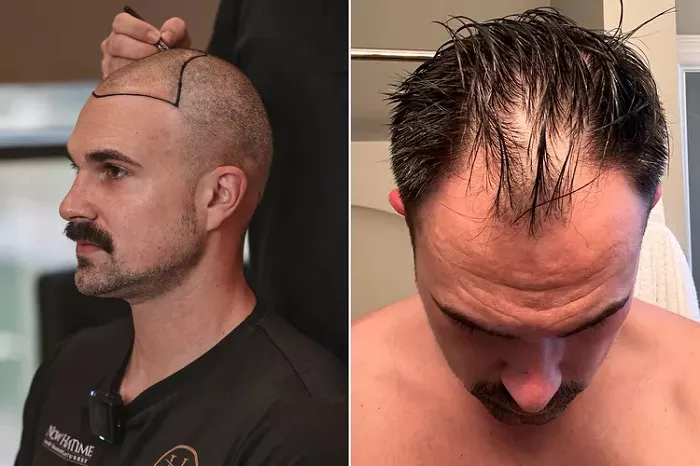Istanbul, Turkey – Jared Gravatt, a 34-year-old from rural Illinois, took a bold step toward transforming his appearance when he traveled to Turkey to undergo hair transplant surgery at a well-known clinic in Istanbul. Gravatt, who says he was “gifted with the genes of a receding hairline,” had long considered the procedure but was finally convinced after seeing the impressive results of a friend who had visited the same facility.
“I’ve always been open about my thinning hair,” Gravatt told PEOPLE. “When I saw my friend’s results from Now Hair Time in Turkey, I decided it was my turn.”
Gravatt underwent Follicular Unit Extraction (FUE) — a method where individual hair follicles are removed from a donor area (typically the back of the scalp) and implanted in balding or thinning areas. His procedure involved 4,200 grafts and lasted over seven hours.
Luxury Medical Tourism on the Rise
Gravatt chose Now Hair Time not just for the medical service but also for the comprehensive package that included a luxury hotel stay, airport transfers, translator support, and detailed post-op care — all for just $4,500. In comparison, a similar procedure in the U.S. could have cost upwards of $15,000 to $20,000.
“The affordability and professionalism were what sold me,” Gravatt said. “The medical facility was clean, the consultation process was thorough, and I had access to a translator at all times.”
This type of medical tourism — particularly for cosmetic procedures like hair transplant surgery — is booming in countries like Turkey, where lower costs and high-quality care draw patients from around the globe.
Navigating Hair Transplant Recovery
Gravatt’s immediate hair transplant recovery involved strict instructions: avoid touching or hitting his scalp, elevate his head at a 45-degree angle during sleep, and carefully cleanse the transplant area with a mild, cold-water rinse. The first three days, he was told, were critical for minimizing swelling and avoiding complications.
“The hardest part was sleeping sitting up,” he said, noting that a neck pillow made the experience more tolerable. “I didn’t want to risk anything. I just stayed in my room and followed the aftercare instructions.”
Now in what experts call the “ugly duckling phase,” Gravatt is experiencing temporary shedding — a normal part of the healing process. Over the next year, his newly transplanted follicles will begin to grow permanently. He’s also following a maintenance routine that includes platelet-rich plasma (PRP) therapy and hair growth stimulants like finasteride and minoxidil, though he admitted being cautious about potential side effects.
Honest About His Journey
Gravatt has documented his hair transplant recovery openly on Instagram, attracting attention — both supportive and skeptical. Some users have praised his transparency, while others have questioned the safety of seeking medical treatment abroad.
“I did this for myself,” Gravatt said. “I wasn’t dealing with deep insecurity. I just wanted a nicer hairline so I could stop thinking about it. Now I can focus on other parts of my life.”
As more people explore affordable, high-quality options for hair transplant surgery abroad, Gravatt’s experience sheds light on both the benefits and responsibilities of traveling for medical care — including choosing a reputable clinic, following recovery protocols, and understanding that results take time.
Related topics:
- Hair Transplant Turns Fatal for Two Engineers in Kanpur, Clinic Under Scrutiny
- When Does Transplanted Hair Start Growing?
- Does Medicaid Cover Hair Transplant?


